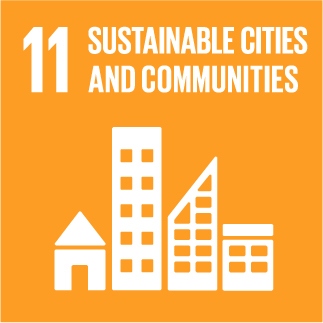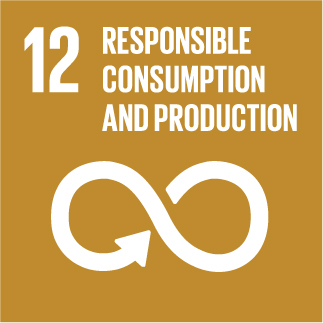URBANREC
Waste-glass fume synthesized using plasma spheroidization technology: Reactivity in cement pastes and mortars
Publication date: 15 March 2016
Source:Construction and Building Materials, Volume 107
Author(s): D. Harbec, A. Tagnit-Hamou, F. Gitzhofer
Using silica-based nanoparticles is one way to stimulate the hydration reactivity and improve the rheological properties of concrete, given their fineness and spherical shape. Based on its high content in amorphous silica ((SiO2 >70wt.%), waste glass is an excellent material for valorization into pozzolanic nanoparticles or the so-called "glass fume" (GF). GF, produced using the radiofrequency induction-coupled-plasma (RF ICP) spheroidization technology, mainly consists of spherical and amorphous nanoparticles (dia. of 30?200nm). Given the scarcity and high cost silica fume (SF), its use in producing high-strength concrete is now limited. GF produced using the scalable plasma spheroidization process is currently being tested in cement-based products as an alternative for SF. The GF was characterized with field-emission-gun scanning electron microscopy (FEGSEM), transmission electron microscopy (TEM), Brunauer?Emmett?Teller (BET) specific surface, acoustic particle sizer (APS), X-ray fluorescence (XRF) and thermogravimetry coupled to mass spectrometry (TGA-MS). The hydration of GF in cement pastes and mortars was monitored in this study. The cement pastes were characterized at early age with isothermal calorimetry and as a function of curing time with X-ray diffraction (XRD) as well as with thermogravimetric analysis (TGA) and variable pressure scanning electron microscopy (VPSEM). Mortars were tested for compressive strength and their microstructure was observed with VPSEM. Also, their hydration was monitored with the electrical conductivity. The results indicate that GF offers nucleation sites for portlandite, alkalis for the activation of the cement hydration at early age, and a pozzolanic behavior for the long-term evolution of mortar properties. In mortars, the GF yielded compressive strengths equivalent to those obtained with SF used as a comparison. The GF mortars required a lower superplasticizer (SP) dosage than the SF mortar because of the ball-bearing effect induced by GF's complete spherical morphology. In addition to spherical nanoparticles, SF contains silica-based nanofilaments, which affect the rheology of fresh cement-based materials.
Graphical abstract
Source:Construction and Building Materials, Volume 107
Author(s): D. Harbec, A. Tagnit-Hamou, F. Gitzhofer
Using silica-based nanoparticles is one way to stimulate the hydration reactivity and improve the rheological properties of concrete, given their fineness and spherical shape. Based on its high content in amorphous silica ((SiO2 >70wt.%), waste glass is an excellent material for valorization into pozzolanic nanoparticles or the so-called "glass fume" (GF). GF, produced using the radiofrequency induction-coupled-plasma (RF ICP) spheroidization technology, mainly consists of spherical and amorphous nanoparticles (dia. of 30?200nm). Given the scarcity and high cost silica fume (SF), its use in producing high-strength concrete is now limited. GF produced using the scalable plasma spheroidization process is currently being tested in cement-based products as an alternative for SF. The GF was characterized with field-emission-gun scanning electron microscopy (FEGSEM), transmission electron microscopy (TEM), Brunauer?Emmett?Teller (BET) specific surface, acoustic particle sizer (APS), X-ray fluorescence (XRF) and thermogravimetry coupled to mass spectrometry (TGA-MS). The hydration of GF in cement pastes and mortars was monitored in this study. The cement pastes were characterized at early age with isothermal calorimetry and as a function of curing time with X-ray diffraction (XRD) as well as with thermogravimetric analysis (TGA) and variable pressure scanning electron microscopy (VPSEM). Mortars were tested for compressive strength and their microstructure was observed with VPSEM. Also, their hydration was monitored with the electrical conductivity. The results indicate that GF offers nucleation sites for portlandite, alkalis for the activation of the cement hydration at early age, and a pozzolanic behavior for the long-term evolution of mortar properties. In mortars, the GF yielded compressive strengths equivalent to those obtained with SF used as a comparison. The GF mortars required a lower superplasticizer (SP) dosage than the SF mortar because of the ball-bearing effect induced by GF's complete spherical morphology. In addition to spherical nanoparticles, SF contains silica-based nanofilaments, which affect the rheology of fresh cement-based materials.
Graphical abstract

» More Information

This project has received funding from the European Union's Horizon 2020 research and innovation program under grant agreement Nº 690103




URBANREC Guidelines by URBANREC Consortium is licensed under a Creative Commons Reconocimiento-NonComercial-NoDerivatives 4.0 Internacional License.
Puede hallar permisos más allá de los concedidos con esta licencia en www.aimplas.net
